Fix: Unable to terminate process ‘Access is denied’
This problem occurs with users who try to terminate a process from the Task Manager. Once you select the process and click the End Task button, you will see an error message indicating that the operation could not be completed. Most users who encounter this issue experience problems running games or other applications. These users cannot run the applications either because they receive the error “Program is already open” or because they see multiple instances of the same app in the Task Manager. This issue is not specific to these cases, though; you might see this message while trying to terminate a hung app or an unwanted app. In all these cases, this Access Denied error will appear when you try to eliminate the process.
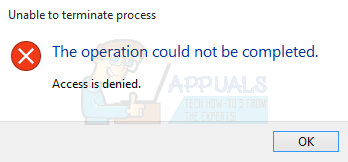
The reason behind this issue isn’t clear, but the most likely contenders are either a Windows (Windows Update) bug or corrupted application files. Windows updates are known to introduce weird bugs, so this might be caused by a Windows bug. In this scenario, there isn’t much that you can do. However, if the problem is specific to a third-party application, then the issue might be a corrupted file. These cases are usually resolved after a reinstall.
Method 1: Use Command Prompt
The easiest solution is to use the command prompt to terminate a process. There are certain commands that can be used to do the same thing, i.e., terminate a process. Here are the steps for stopping processes:
- Press the Windows key once.
- Type command prompt in the Start Search box.
- Right-click Command Prompt from the search results and select Run as administrator.

- Type taskkill /im process-name /f and press Enter. You can get the process name by right-clicking the process you want to kill (from the Task Manager) and selecting Details. This will open the Details tab with your process already selected. Simply look at the name of the process and type it in the process-name.
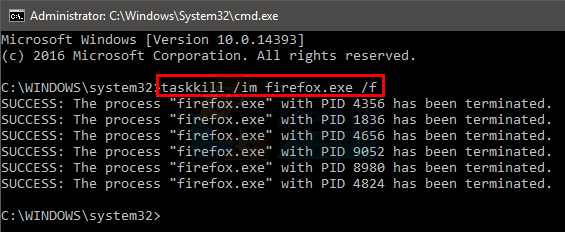
You can run this command for all types of processes and see if this works for you.
Method 2: Enter Safe Mode and Reinstall
If the problem occurs when you try to terminate a third-party application process, try to uninstall and reinstall the application to see if that resolves the issue.
Here are the steps for getting into Safe Mode and then reinstalling the application:
Note: Make sure you have the application installer downloaded on the system before getting into Safe Mode.
- Hold the Windows key and press R.
- Type msconfig and press Enter.
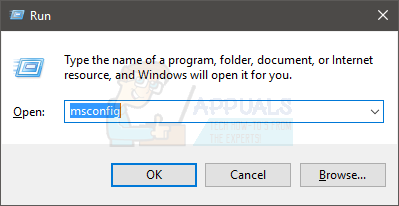
- Select the Boot tab.
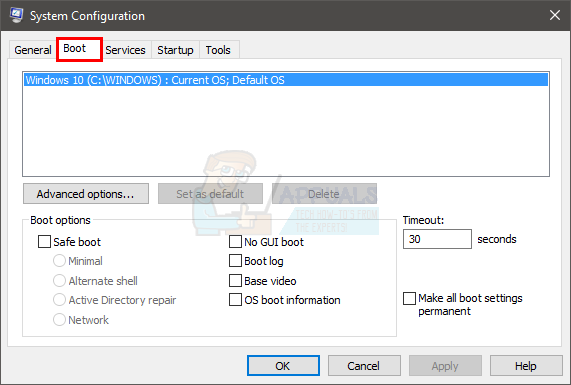
- Check the option Safe Boot in the Boot options section.
- Select the option Minimal under the Safe Boot option.
- Click Ok.

- Windows will ask you to restart. Click Restart.
- Once the system restarts, you will be in Safe Mode. Uninstall the problematic application. Hold the Windows key and press R.
- Type appwiz.cpl and press Enter.

- Locate the application and select it.
- Click Uninstall and follow the on-screen instructions.
- Now, reinstall the application by running its installer.
- Once the application is installed, you need to turn off the Safe Mode option.
- Hold the Windows key and press R.
- Type msconfig and press Enter.
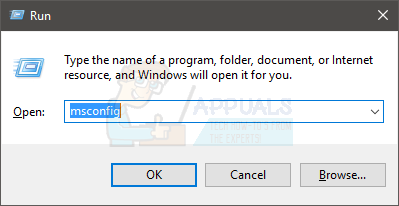
- Select the Boot tab.

- Uncheck the option Safe Boot in the Boot options section.
- Click Ok.
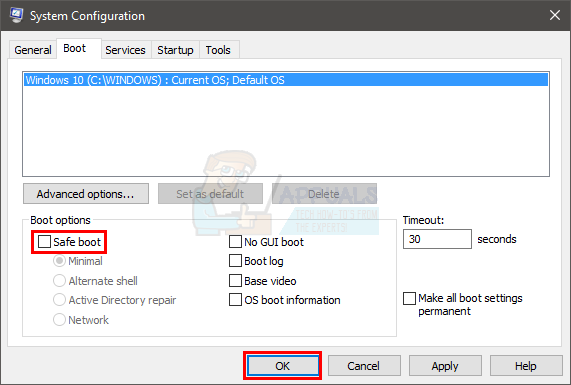
- Windows will ask you to restart. Click Restart.
Your computer should start in normal mode. Check if the problem is resolved or not.
Method 3: Use Process Hacker
Process Hacker is a free tool designed to monitor system resources, debug software, and detect malware. However, we are only concerned with its ability to monitor the running applications. Process Hacker is considered an alternative to Task Manager and Process Explorer. This means that it can terminate processes just like Task Manager.
Using Process Hacker to terminate processes has worked for many users. Here are the steps for downloading and using Process Hacker to stop a process:
- Click here and click the Installer button to download Process Hacker.
- Once downloaded, install Process Hacker and run it.
- Process Hacker will show you a list of running applications. Simply right-click the problematic application and select Terminate.

- Click Terminate to confirm.
Repeat these steps for all the applications you want to terminate (the ones that Task Manager couldn’t). If Process Hacker can’t terminate the processes, there isn’t much you can do.
Method 4: Use Process Explorer
Process Explorer is another free tool that can be used to explore the processes running on your system. This tool gives a detailed view and allows the editing of permissions as well. If Process Hacker didn’t work, you might try Process Explorer to see if this helps you terminate the application. Follow the steps below:
- Click here and select the link Download Process Explorer. This will download a zip file for you.
- You will need a compression program to unzip the contents of the downloaded file. Use Winzip or WinRAR.
- Double-click the downloaded zip file.
- Double-click procexp.exe or procexp64.exe to open Process Explorer.
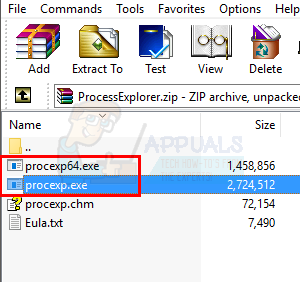
- Once Process Explorer starts, it will give you a detailed list of programs running on your system. Locate and double-click the problematic application.
- Click the Security Tab.
- Click Permissions.
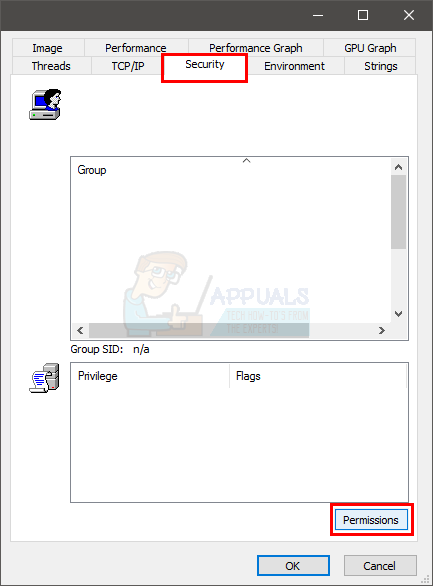
- Click Advanced.

- Select your account from the list.
- Click Edit.

- Check the options Full Control, Read, and Write.
- Click Show advanced permissions.

- Make sure the option Terminate is checked.
- Click Ok and click Ok again.

- Click Ok for all other Windows.
- Now, when you are back at Process Explorer, right-click the problematic program and select Kill Process.
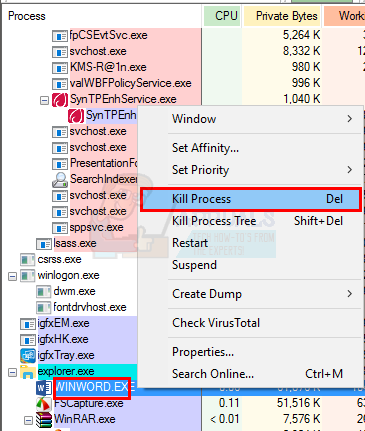
This should solve the issue. If you are still having issues, do the following:
- Click on the File option (from Process Explorer) and select Show Details for All Processes.
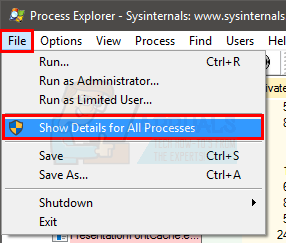
- Click Yes if it asks for permissions.
- Process Explorer will restart now. Once Process Explorer restarts, right-click the problematic application and select Kill Process. This should solve the issue.
Method 5: Use WMIC
WMIC stands for Windows Management Instrumentation Console. This utility can be used to terminate processes as well. You can use WMIC and its commands to terminate processes from the command prompt. Some users found this helpful in getting rid of the problematic application. Here are the steps for using WMIC commands:
- Press the Windows key once.
- Type command prompt in the Start Search box.
- Right-click Command Prompt from the search results and select Run as administrator.
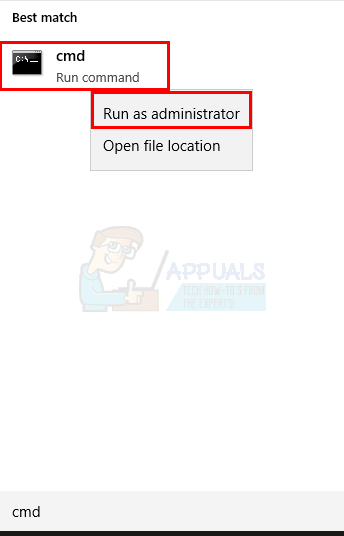
- Type wmic process where name=’myprocessname.exe’ delete and press Enter. You can get the process name by right-clicking the process you want to kill (from the Task Manager) and selecting Details. This will open the Details tab with your process already selected. Simply look at the name of the process and type it in the myprocessname.exe (don’t remove the quotes).

This should resolve the issue for you.
Method 6: Reboot
If nothing else worked, then this is your only choice. There are some processes that cannot be terminated, especially if you are dealing with system processes. This isn’t a solution, but it’s an option you are left with. A simple reboot will usually resolve the issue, and you will be able to use the application normally once the restart is complete.